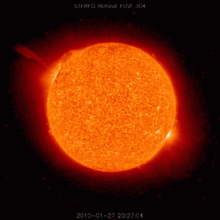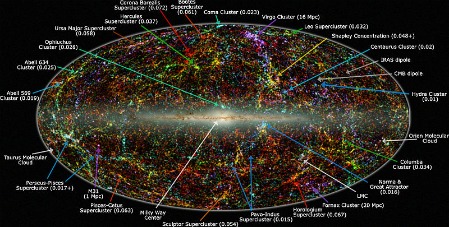Just like the earth, the sun has north and south magnetic poles. And just as the earth’s poles flip every now and then, the sun also undergoes regular magnetic reversals. But whereas the earth’s cycle takes thousands of years to complete, the solar magnetic cycle only takes about 11 years. It happens the sun is just now stirring from its quieter phase, a sort of solar nap, which lasts two or three years and has been particularly deep this last time around. The sleeper has awakened:
The solar flare began at 3.48 am EDT and was recorded an X6.9 class on the three class scale used to measure the strength of solar flares. The recent solar flare is three times larger than the previous flare of this solar cycle — the X2.2 that occurred on Feb. 15, 2011. The weakest flares are rated C-class, medium sized flares are M-class while the strongest type of solar eruptions are rated X-class. Solar activity waxes and wanes over an 11-year sun weather cycle.
That’s a big event. It’s not coming towards us, space is big and the earth is tiny, but if it were it could mean big trouble. The last time a really large coronal mass ejection hit our planet was in 1859. The flux induced current in nascent communication systems, taking out entire telegraph networks, and created the most powerful heavenly display’s ever recorded:
From Maine to the tip of Florida, vivid curtains of light took the skies. Startled Cubans saw the auroras directly overhead; ships’ logs near the equator described crimson lights reaching halfway to the zenith. Many people thought their cities had caught fire. Scientific instruments around the world, patiently recording minute changes in Earth’s magnetism, suddenly shot off scale






